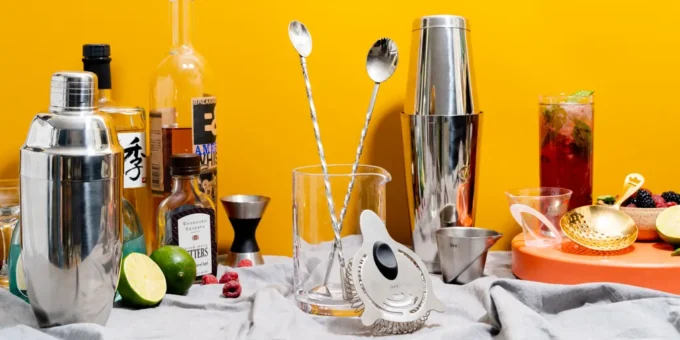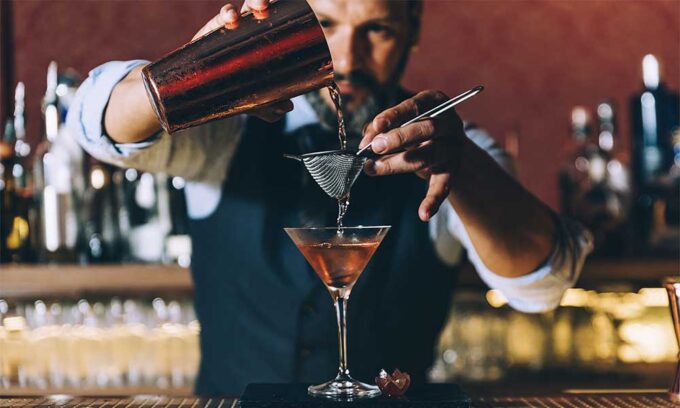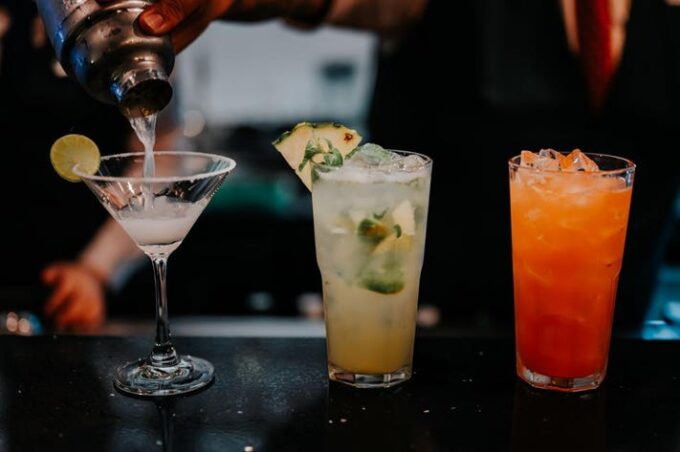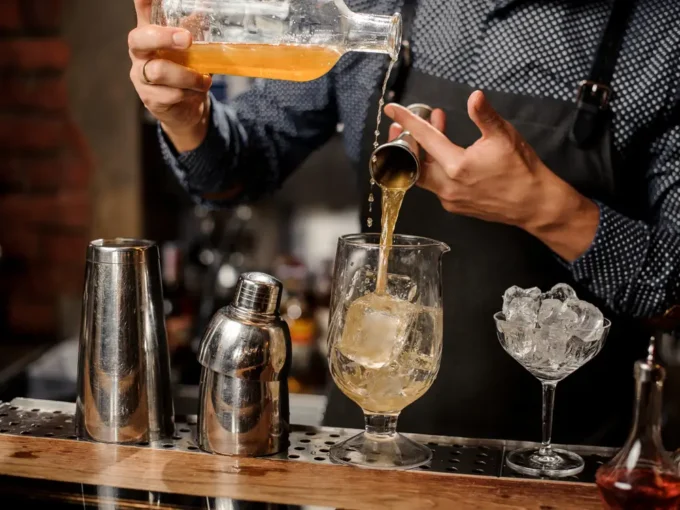Mixology, also known as the art of cocktail making, is a highly popular skill to have. From classic cocktails to modern twists, mixology has evolved from a simple bar skill to an art form. Whether you are a professional bartender, a home bartender, or just someone who wants to impress their guests with a well-crafted drink, learning mixology is a great skill to have.
Today, we’ll provide a step-by-step process for learning the art of mixology, as well as describe the different cocktail-making techniques you should know and the tools you should have.
Understanding Mixology
Before we dive into the cocktail-making process, it’s important to understand the fundamentals of mixology. Mixology is all about balancing ingredients and flavors to create a well-crafted drink. It’s important to understand the different types of cocktails and their families, as they serve as a foundation for creating your own unique cocktail recipes.
There are a few main cocktail families that serve as a foundation for mixology, although mixologists sometimes disagree about them, and they can overlap with each other or have sub-categories: sours/daisies/fizzes, highballs, cobblers/juleps/smashes, punches, flips, and spirit-forward.
Each family has its own unique set of ingredients and proportions that make it distinct from the others. For example, a sour cocktail typically consists of a base spirit, citrus juice, and sweetener, while a spirit-forward cocktail consists of spirit, fortified wine (vermouth), and bitters– an example being the Martini.
Essential Cocktail-Making Tools

source:nytimes.com
Having the right tools is really important in mixology. These tools make the process of making cocktails easier and more efficient. Here are some of the key pieces of barware that every mixologist should have:
- Shakers – Used to combine ingredients and chill the drink. There are two main types of shakers: the Boston shaker and the cobbler shaker.
- Strainers – Allows for the separation of ice and solid ingredients from the drink. There are three types of strainers to choose from: the Hawthorne strainer, the julep strainer, and the fine-mesh strainer.
- Mixing Glass – Mixing glasses are used to stir and chill drinks containing ingredients with similar densities (spirit-forward), like an Old Fashioned or Manhattan.
- Jiggers – Accurately measuring ingredients is a key part of mixology, and jiggers are a measuring cup for small, precise amounts.
- Bar spoons – Help to blend ingredients and infuse flavors. These essential tools are a staple in any mixologist’s toolkit and are usually paired with a mixing glass.
- Muddlers – Mash fruits and herbs to release their flavors, adding a unique touch to any cocktail.
The Cocktail-Making Process

source:craftybartending.com
Now that you have the right tools and understand the fundamentals of mixology, it’s time to dive into the cocktail-making process. The process of making a cocktail involves choosing the right serving glass, measuring ingredients, muddling, shaking or stirring, straining, and garnishing.
1. Choosing the Right Glass
The type of glass you choose depends on the type of cocktail you are making. For example, a Martini is typically served in a Martini glass or coupe, while a mojito is served in a highball glass.
2. Measuring Ingredients
Measuring ingredients accurately is key in mixology. Using a jigger, measure the ingredients according to the recipe so that your cocktail is balanced and consistent every time.
3. Muddling
If the cocktail recipe calls for muddling fruits or herbs, use a muddler to mash them, releasing their flavors into the drink.
4. Shaking & Stirring
Once all ingredients are in the shaker, add ice to and shake vigorously to chill and combine the ingredients. You’ll shake cocktails that have multiple ingredients with various density– such as liquor and juice or liquor and egg white. Otherwise, you’ll stir your cocktail instead.
5. Straining
Once the cocktail is shaken or stirred, use a strainer to separate the ice from the drink. Depending on the cocktail, you may use a Hawthorne strainer, a julep strainer, and/or a fine-mesh strainer.
6. Garnishing
Garnishing is the final step in the cocktail-making process. Depending on the cocktail, you may use a citrus peel, herbs, a cocktail cherry, or even flowers to enhance the flavor and presentation of the drink. There is some room for creativity here!
Popular Cocktail Recipes

source:forbes.com
Here are five classic cocktails and five modern cocktails that every mixologist should know how to make:
Classic Cocktails
- Old Fashioned – Muddle a sugar cube with 2 dashes of Angostura bitters and a splash of water. Add ice and bourbon or rye whiskey, and garnish with an orange peel and a cherry.
- Martini – Combine gin and dry vermouth in a shaker filled with ice, stir until chilled, then strain into a chilled martini glass. Garnish with a lemon twist or olive.
- Margarita – Shake tequila, lime juice, and orange liqueur with ice, then strain into a salt-rimmed glass. Garnish with a lime wedge.
- Manhattan – Stir rye whiskey, sweet vermouth, and bitters with ice, then strain into a chilled cocktail glass. Garnish with a cherry.
- Daiquiri – Shake white rum, lime juice, and simple syrup with ice, then strain into a chilled cocktail glass.
Modern Cocktails
- Negroni – Stir gin, sweet vermouth, and Campari with ice, then strain into a rocks glass with ice. Garnish with an orange peel.
- Moscow Mule – Combine vodka, lime juice, and ginger beer in a copper mug filled with ice. Garnish with a lime wedge.
- Aperol Spritz – Combine Aperol and Prosecco in a wine glass filled with ice, then top with soda water. Garnish with an orange slice.
- Espresso Martini – Shake vodka, espresso, and simple syrup with ice, then strain into a chilled cocktail glass. Garnish with coffee beans.
- French 75 – Shake gin, lemon juice, and simple syrup with ice, then strain into a champagne flute. Top with Champagne and garnish with a lemon twist.
Mixology Courses

source:insider.com
If you are serious about learning mixology, there are several options available to you. Mixology classes and courses from A Bar Above can provide you with the knowledge and skills needed to become a skilled mixologist.
Mixology classes can be found at local bars, restaurants, and even community colleges. These classes typically cover the basics of mixology, such as the different cocktail families, essential tools, and techniques. Mixology classes can be a great way to meet other aspiring mixologists and gain hands-on experience.
Online mixology courses are also available for those who prefer to learn at their own pace. These courses cover everything from the basics to advanced techniques and are taught by professional mixologists. Online mixology courses can be a great way to gain knowledge and skills from the comfort of your own home.
Mixology is a really cool skill for anyone who wants to impress their guests with a well-crafted drink. Understanding the fundamentals of mixology, having the right tools, and mastering the cocktail-making process are all essential to becoming a skilled mixologist.
With the popularity of mixology on the rise, there are several options available to those who want to learn, including mixology classes and online courses. Whether you are a professional bartender or just someone who loves making cocktails at home, learning mixology can be a rewarding and enjoyable experience.







